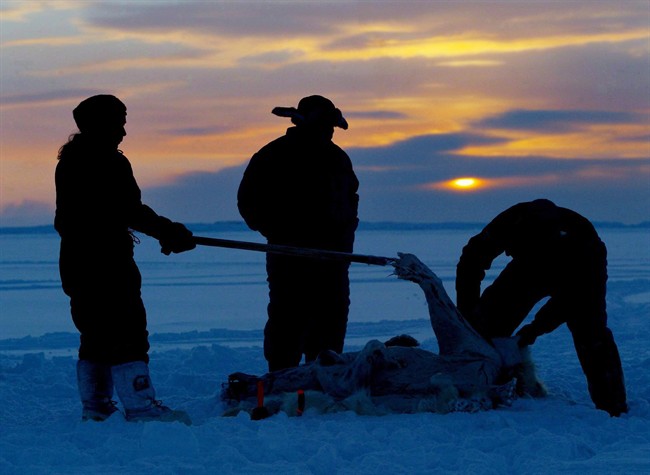Canada is leading an international effort to pull together the most effective ways to prevent suicide among aboriginal youth in the Arctic, an ongoing tragedy across the circumpolar world.

This month, officials from the eight countries that ring the North Pole gave final approval for researchers to visit northern aboriginal communities to study how they’re dealing with the problem.
Nunavut’s chief coroner called a special inquiry in January after 45 people killed themselves in 2013 – a significant increase from the previous high of 34.
READ MORE: Nunavut coroner calls inquiry after record number of suicides in 2013
That record number put the territory’s suicide rate at 13 1/2 times the national average.
But it’s bad elsewhere, too.
Suicide rates among Alaskan aboriginals are about three times the United States average. In Greenland, 2010 government data reported about one suicide a week in a population of about 56,000.
Statistics in Norway, Sweden and Finland for the aboriginal Saami population are difficult to tease out. But available data suggests suicide and mental health are issues in their communities as well.
“I think that’s clearly why the Saami health leadership as well as the government of Norway is supportive of this project,” said Malcolm King, science director for the Canadian Institutes of Health Research, which is co-ordinating the project.
Teams are already at work in the participating countries of Canada, the U.S., Norway, Sweden and Denmark, King said. He’s hoping Russia, which is also said to suffer high Arctic aboriginal suicide rates, will join.
Suicide across the circumpolar world seems to have some common features, said King. It affects predominantly young people up to their mid-20s, and seems to involve rapid cultural displacement that Arctic people faced as southern governments exerted their authority over their northern regions.
“A common thread that’s emerged in a lot of this so far is what we might call cultural continuity,” he said.
“It issues around formation of identity, and disconnections with the community. That may not sit as a cause in mainstream thinking, but it certainly has been talked about a lot as a common thread among indigenous peoples.”
King said common themes are also beginning to emerge about the most effective prevention programs.
“There are certainly some indications that involving youth in various ways in finding their own pathway to mental wellness is an important part of projects,” he said. “Good practice models all involved active participation of youth.”
Often, those models are as simple as giving youth a voice, such as a photography, theatre or film project. Some involve peer support through social media.
“They get people thinking positively about their mental well-being, providing a positive alternative to what otherwise might be negative,” King said. “Overcoming a sense of being alone, in itself, is probably a good thing.”
The government of Nunavut has long run suicide prevention programs of its own. Mental-health advocates say services in the Arctic don’t even come close to meeting the demand. They point out Nunavut doesn’t even have a residential substance abuse program.
The overall report is expected at the next Arctic Council meeting in March in Iqaluit. The Canadian government has contributed $1 million to the project.

Comments